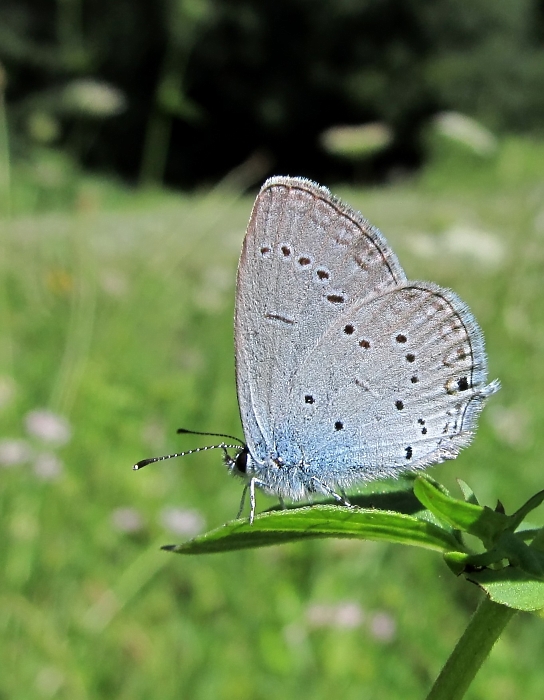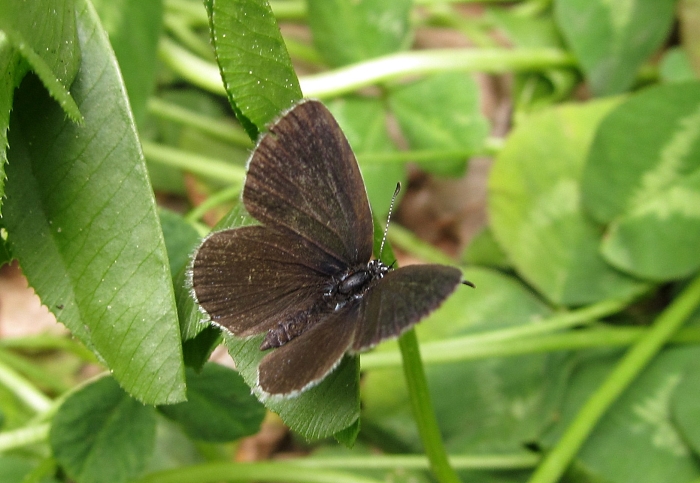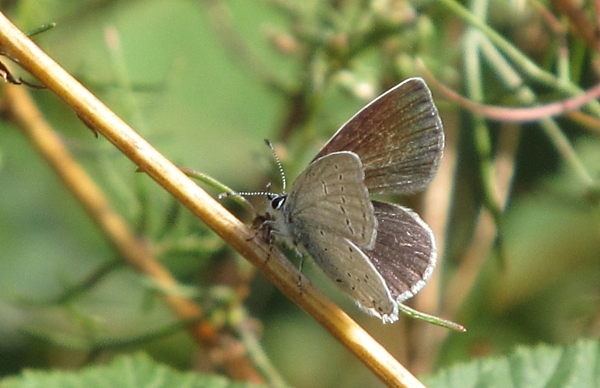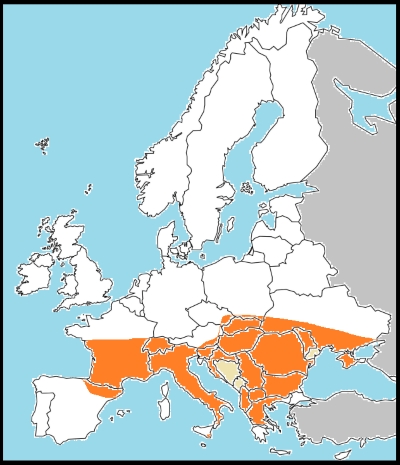
Male, Switzerland, July 2013

Male, Switzerland, April 2014
Refresh page if pictures don't load fully:

Male, Switzerland, July 2013

Male, Switzerland, April 2014

Male, Switzerland, May 2013

Mating pair, Switzerland, May 2016

Male, Switzerland, May 2015

Male, Switzerland, May 2012

Male, Switzerland, August 2012

Female, Switzerland, April 2017

The same female, laying in a flowerhead of medick

Female, Switzerland, May 2012

Female, May 2014

Female, Switzerland, October 2012

Male, France, August 2008

Male, Switzerland, July 2008

Switzerland, August 2008

Male, Switzerland, July 2005

Male, Val d'Aran, July 2005

Female, Switzerland, May 2006

This one shows a hint of orange...

Distribution
The Provenšal short-tailed blue is generally regarded as scarcer and more local than its congener, the short-tailed blue, but my experience is different. In Switzerland and nearby France it is distinctly the commoner of the two, as it is in the Pyrenees and North Spain. It is, however, probably much scarcer in the eastern parts of its range and large parts of what I have coloured in orange on the map have no records. I see it in Switzerland from April onwards and from the valley up to subalpine pastures. It is more a creature of woods and damp, grassy waysides than is the short-tailed blue, though their habitats overlap extensively and I know many sites where both fly.
Identification is usually easy. Unlike the short-tailed blue, the Provenšal short-tailed blue shows no - or almost no - orange on the underside of the hindwing. Care should be taken in spring, when short-tailed blues may have very little orange, but a good view should remove doubt. In addition, the male short-tailed blue has a distinctly stronger and longer tail and the female usually has at least some blue scales. Provenšal short-tailed blue females never show any blue at all. Sometimes the tail of the male is so short as to be vestigial or little more than a kink in the margin. Then this species might be mistaken for an Osiris blue. The margin of the Osiris blue, however, is completely smoothly rounded, lacking any hint of a kink. The colour is also different, Osiris males being a deeper, violet shade of blue.
Tolman lists just two foodplants for the Provenšal
short-tailed
blue: crown vetch and galega. I am sure it actually takes quite a
variety of pea family plants, including clovers and medicks (as shown
by the laying female in the picture above). It hibernates as a mature
caterpillar, pupating early in the spring. There are three broods in
the year.